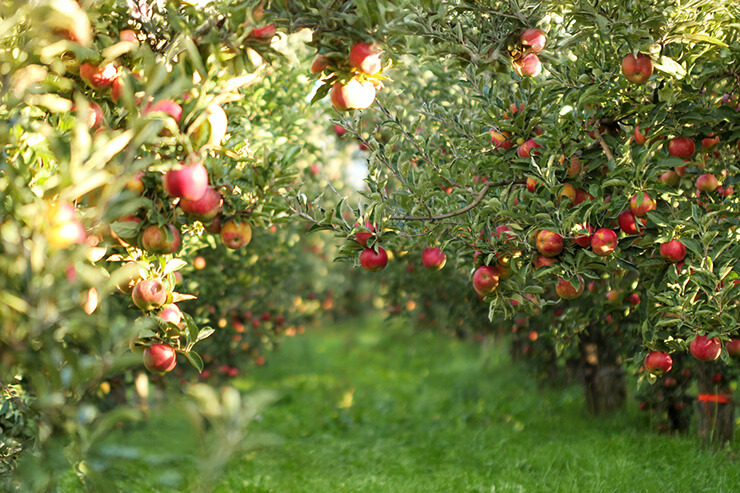
Hard to believe that just 150 years ago, American orchards grew over 2,800 named apple varieties. Today, we’ve lost roughly 86% of those historic cultivars—a staggering disappearance that would make any gardener’s heart ache.
But here’s the exciting part: they’re not all gone forever. Across the country, a passionate community of apple detectives, horticulturists, and plain old fruit lovers are on a treasure hunt, rediscovering varieties that were thought extinct and bringing them back from the brink.
The Great Apple Exodus
The 19th century was the golden age of American apples. Every region had its local favorites, each perfectly adapted to specific climates and purposes. There were apples for fresh eating, baking, cider making, and even livestock feed. Names like Maiden’s Blush, Westfield Seek-No-Further, and the wonderfully named Pig’s Nose Red told stories of their origins and characteristics.
The decline began with industrialization and the push for standardization. Railroads could ship uniform varieties nationwide, making local specialties seem unnecessary. The final blow came with Prohibition in 1920, which eliminated the massive cider apple market overnight. Suddenly, thousands of varieties bred specifically for fermentation became worthless, and many orchards were simply abandoned or cut down.
Modern-Day Apple Archaeology
Enter the apple hunters–part botanist, part historian, part detective. Organizations like Seed Savers Exchange, the Temperate Orchard Conservancy, and individual enthusiasts spend weekends combing through old homesteads, forgotten farmsteads, and even urban lots where century-old trees might still be hiding.
One of the most remarkable recovery stories involves the Black Oxford apple. This deep purple, almost black apple was thought completely extinct until apple detective John Bunker discovered a single surviving tree in a Maine field in the 1990s. The elderly landowner remembered her grandfather grafting it decades earlier. Today, thanks to careful propagation, Black Oxford apples are available again–their wine-like flavor and stunning appearance making them a hit at farmers markets.
The Art of Apple Identification
Identifying these mystery apples requires serious detective work. Apple hunters carry detailed pomological guides, measuring fruit dimensions, noting skin texture, flesh color, and seed characteristics. They interview elderly locals who might remember grandfather’s favorite variety, pore over century-old nursery catalogs, and compare notes with other enthusiasts online.
Sometimes the discoveries are hiding in plain sight. The Calville Blanc d’Hiver, a legendary French apple prized by Thomas Jefferson, was thought lost in America until researchers found it thriving in Virginia, just miles from Monticello. This knobby, pale apple with its distinctive ribbed surface had been growing there continuously since Jefferson’s time, simply unrecognized for its historical significance.
Rescued from the Brink
One of my favorite rediscovery tales involves Esopus Spitzenburg, once considered America’s finest dessert apple. I have a tree of my own, that I purchased as a bare root from a botanical garden’s fundraiser, and just got my first few apples this year! This variety was George Washington’s favorite and was widely grown in New York’s Hudson Valley. By the 1970s, it was considered nearly extinct until persistent searching located a few surviving trees in old orchards. Now it’s slowly making a comeback, and tasting one explains why our first president loved it–the complex, wine-like flavor with hints of spice is absolutely extraordinary.
The Roxbury Russet holds the distinction of being America’s oldest named apple variety, first recorded in Massachusetts around 1635. Despite its rough, brown skin that looks more like a potato than an apple, this hardy variety was prized for its incredible keeping qualities and sweet-tart flavor that improved with storage. Thought lost, it was rediscovered in several old New England orchards and is now being grown by heritage apple enthusiasts.
Why This Matters
Beyond the romantic appeal of saving agricultural heritage, these recovery efforts serve practical purposes. Historic varieties often possess genetic traits that modern apples lack–disease resistance, climate adaptability, and unique flavors that breeders are eager to incorporate into new varieties. The Arkansas Black, recovered from near-extinction, is prized for its natural resistance to fire blight and exceptional storage life.
These forgotten apples also tell the story of American agriculture and immigration patterns. Varieties like Wolf River reveal Scandinavian settlement patterns, while apples with German names trace other ethnic communities’ contributions to our agricultural heritage.
Growing the Past
For home gardeners interested in growing these living antiques, many heritage varieties are now available through specialty nurseries. Organizations like the Heritage Orchard Society maintain collections and can provide grafting wood for rare varieties. Some require patience–heritage apples often take longer to establish and may have specific growing requirements that modern varieties have been bred to eliminate.
The search continues. Apple hunters estimate that hundreds of historic varieties remain to be rediscovered, hidden in old homesteads and forgotten corners of rural America. Each recovered variety is a small victory against genetic erosion and a delicious link to our agricultural past.
Next time you bite into a grocery store apple, remember: you’re tasting just a tiny fraction of the incredible diversity that once defined American orchards. Thanks to dedicated apple detectives, those forgotten flavors aren’t lost forever–they’re just waiting to be found again. Learn more about apples in our Audacious Apples Gardening Guide.


 Previous
Previous

